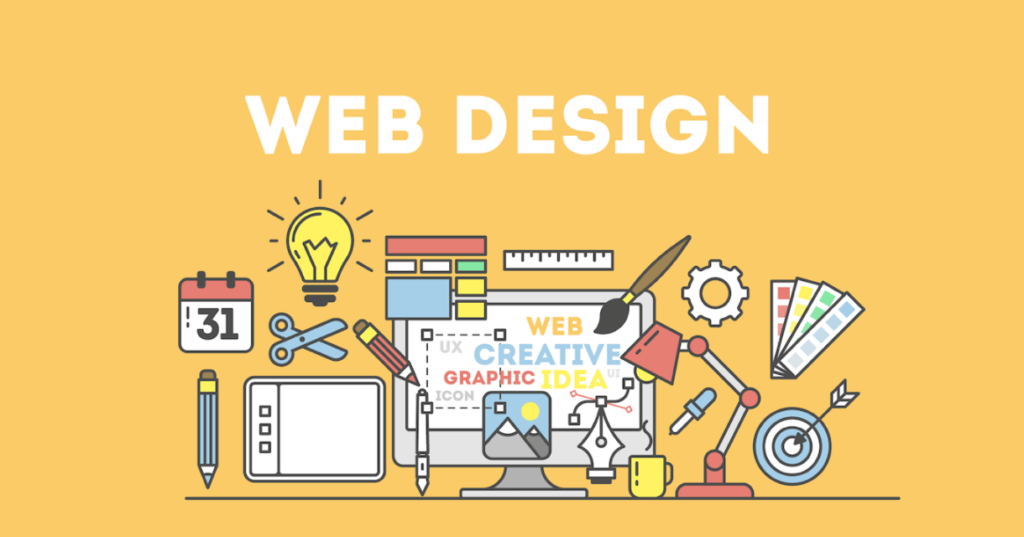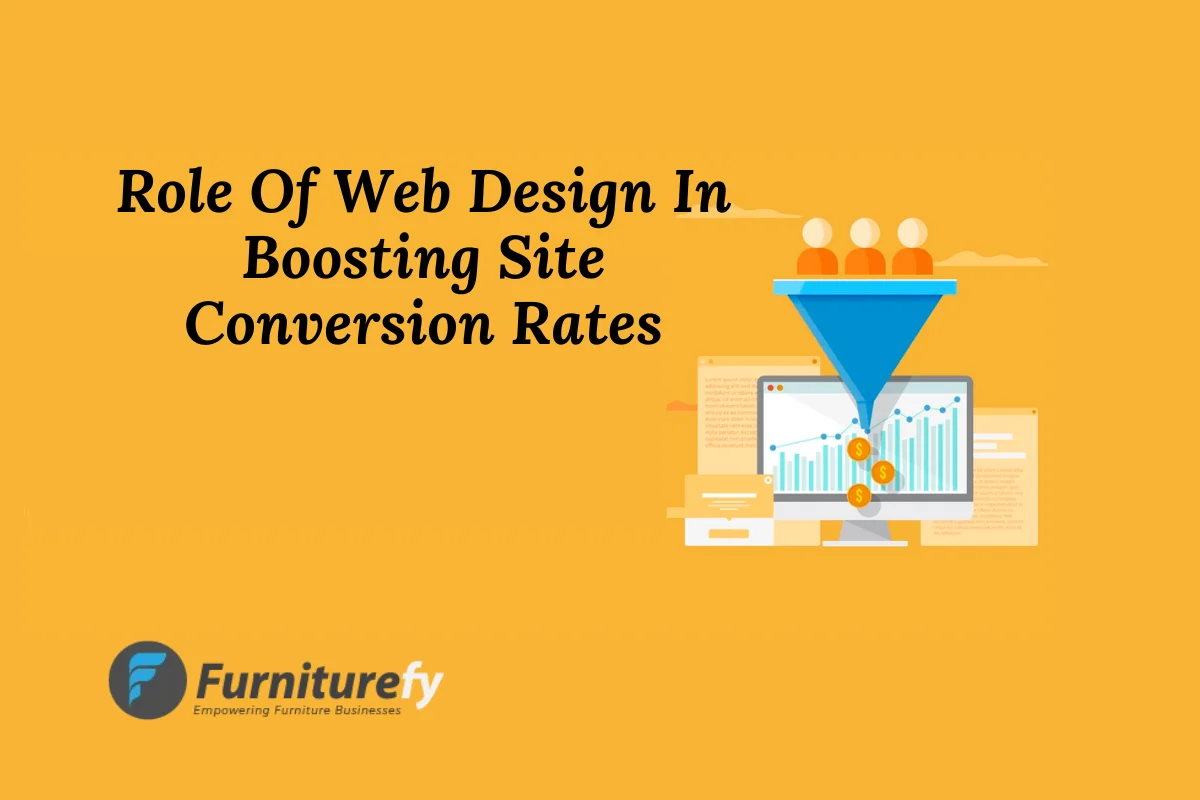In today’s digital world, web design is more than just looking good—it’s a key part of how your site turns visitors into customers. The role of web design in boosting site conversion rates is huge, as a well-designed website doesn’t just grab attention, it helps guide people smoothly through the buying process.
In this blog, we’ll dive into how your web design can make a real difference to your site’s conversions and share some practical tips to help you improve its performance.
What is Web Design
Web design is the process of creating and arranging elements on a website to ensure it is visually appealing, functional, and user-friendly. It involves layout design, color schemes, typography, and interactive features to enhance user experience and achieve specific goals, such as increasing engagement or conversions. Effective web design balances aesthetics with usability.

Why Web Design Matters for Conversion Rates
1. First Impressions Count
Your website’s design is often the first thing visitors notice. A professional, visually appealing design can immediately convey trustworthiness and credibility. On the other hand, a cluttered or outdated design may turn potential customers away. The first impression can make or break a visitor’s decision to stay or leave your site.

2. User Experience (UX) and User Interface (UI) Design
Good web design ensures a positive user experience (UX) and an intuitive user interface (UI). UX design focuses on the overall feel of the site and how easy it is for visitors to achieve their goals, while UI design deals with the look and functionality of individual elements. A well-designed UX/UI can simplify navigation, reduce friction points, and guide users towards desired actions, such as making a purchase or signing up for a newsletter.
3. Mobile Responsiveness
With an increasing number of users accessing websites from mobile devices, mobile responsiveness is crucial. A responsive design ensures that your site looks and functions well on all screen sizes, from smartphones to desktops. Google also prioritizes mobile-friendly sites in its rankings, making mobile responsiveness an essential factor for SEO and conversions.
4. Page Speed and Load Time
A well-designed website isn’t just about looks; it also involves performance. Page speed affects user experience and can impact your site’s conversion rate. Slow-loading pages can frustrate users and lead to higher bounce rates. Optimizing images, leveraging browser caching, and using a content delivery network (CDN) are ways to enhance page speed and keep visitors engaged.
5. Clear Call-to-Actions (CTAs)
Effective web design highlights your calls-to-action (CTAs) and makes them easy to find. CTAs should be strategically placed and visually distinct to encourage users to take the next step, whether that’s filling out a form, making a purchase, or contacting your business. The design and placement of CTAs play a crucial role in driving conversions.
6. Trust Signals and Credibility
Incorporating trust signals such as customer testimonials, reviews, security badges, and clear contact information can boost your site’s credibility. A well-designed site integrates these elements seamlessly, helping to build trust with your audience and encourage them to convert.
Optimizing Your Web Design for Better Conversions
Optimizing your web design for better conversions involves improving visual appeal, user experience, and functionality. Key strategies include ensuring mobile responsiveness, enhancing page speed, and placing clear, compelling calls-to-action. Regular A/B testing and user feedback help refine design elements to effectively guide visitors toward desired actions, ultimately boosting conversion rates and achieving business goals.

- Conduct User Research
Understand your audience’s needs, preferences, and pain points. Use tools like surveys, heatmaps, and user testing to gather insights and tailor your design to meet their expectations.
- A/B Testing
Experiment with different design elements, such as CTA buttons, colors, and layouts, to see what resonates best with your audience. A/B testing can provide valuable data on which design choices lead to higher conversion rates.
- Prioritize UX/UI
Invest in high-quality UX/UI design to ensure a smooth and enjoyable user journey. Focus on intuitive navigation, clear and compelling CTAs, and a clean, uncluttered design.
- Optimize for Speed
Regularly check your site’s performance and make necessary improvements to ensure fast load times. Tools like Google PageSpeed Insights can help identify areas for optimization.
- Mobile Optimization
Ensure your design is responsive and provides a seamless experience on mobile devices. Test your site on various devices and screen sizes to confirm that it performs well everywhere.
Conclusion
Effective web design is integral to enhancing your site’s conversion rate. Understanding the role of web design in boosting site conversion rates involves focusing on first impressions, user experience, mobile responsiveness, page speed, CTAs, and trust signals. By addressing these elements, you create a site that not only attracts visitors but also converts them into customers. Regularly optimizing and testing your design based on user feedback and performance metrics will help you maintain a high conversion rate and achieve your business goals.
Read more : Impact of Quality Score on PPC Campaigns
FAQs
To improve your website’s design for better conversions, focus on creating a visually appealing and user-friendly experience. Implement clear and compelling CTAs, ensure mobile responsiveness.
Mobile responsiveness ensures that your website functions well on all types of devices, including smartphones and tablets. With increasing mobile traffic, having a mobile-friendly design is crucial for both user experience and SEO, which in turn impacts your conversion rates.
Page speed affects user experience; slow-loading pages can lead to frustration and higher bounce rates. A fast-loading site keeps visitors engaged and increases the likelihood of conversion.
Trust signals include elements like customer testimonials, reviews, security badges, and clear contact information. They help build credibility and trust with your audience, making them more likely to take action, such as making a purchase or filling out a form.

Alex Mitch
Welcome to my blog! With over 10 years in digital marketing, I’ve seen its incredible impact on smaller businesses. Join me as we explore how digital marketing can grow your audience and boost your business. Whether you’re an experienced entrepreneur or just starting out, you’ll find practical tips and insights to enhance your digital marketing strategies.





